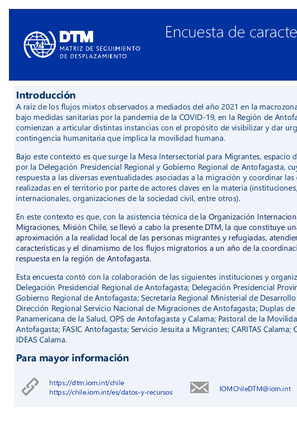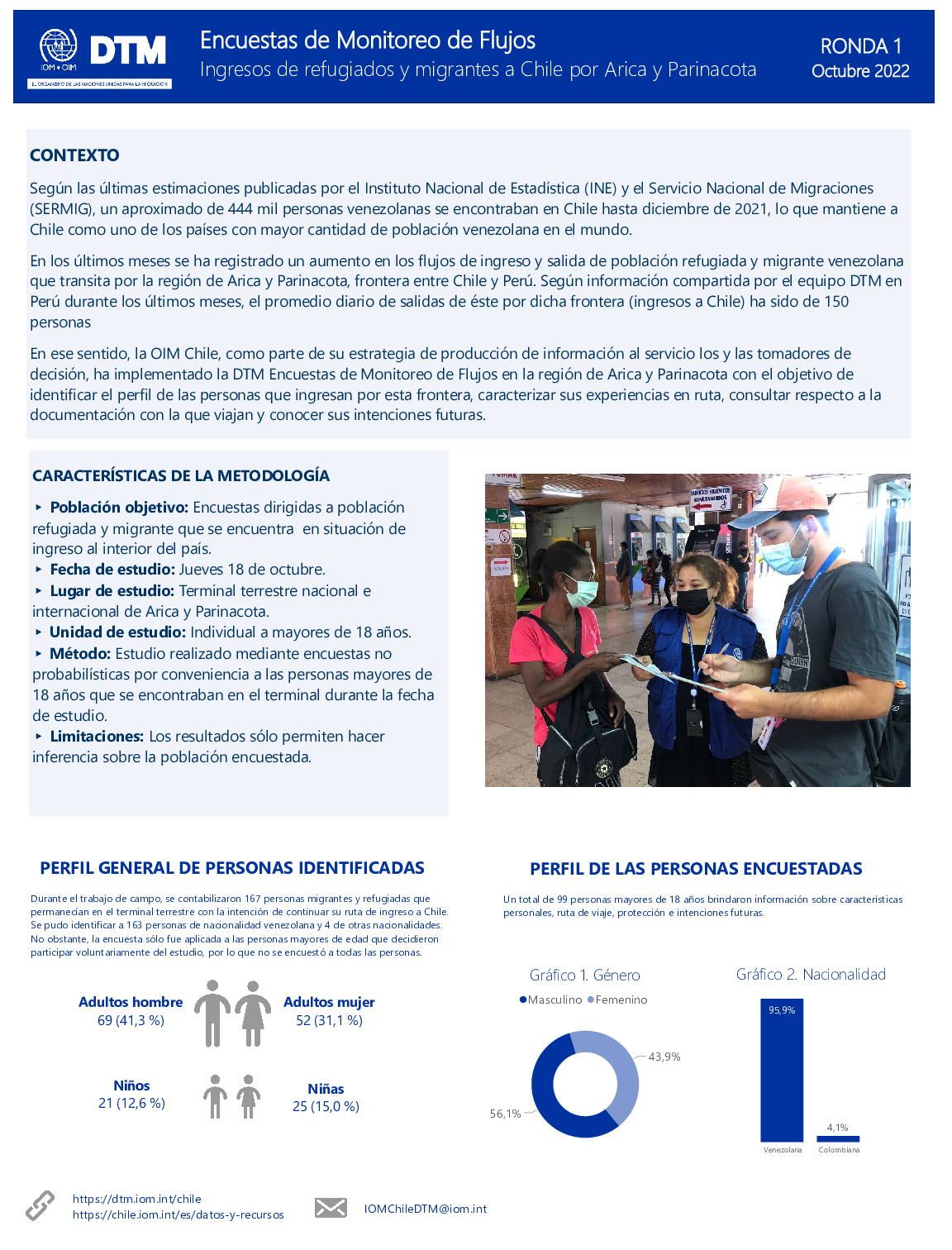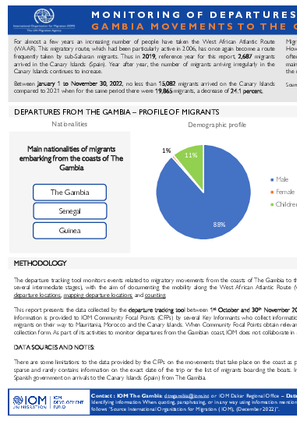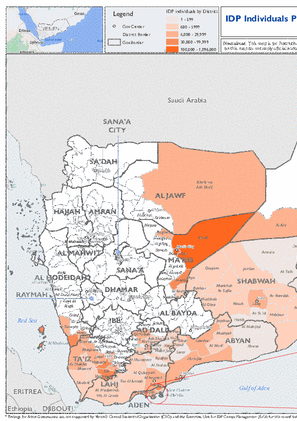-
Countries
-
Data and Analysis
-
Special Focus
-
Crisis Responses

Contact
DTM Pakistan, iomisbdtmremapteam@iom.int
Language
English
Location
Pakistan
Period Covered
Nov 19 2022
Dec 02 2022
Activity
- Flow Monitoring
IOM Pakistan collects data on the outflows of undocumented Afghan migrants at the Torkham and Chaman border crossing points in an effort to better understand the migration movements of undocumented Afghan migrants returning to Afghanistan from Pakistan. This exercise is part of the European Union funded project “Displacement Tracking Matrix Regional Evidence for Migration Analysis and Policy (DTM REMAP)”.
Between 19 November and 2 December 2022, 2,548 undocumented Afghan nationals spontaneously returned to Afghanistan, including 691 through the Torkham border point and 1,857 through the Chaman border point. Border authorities facilitated the return of 150 individuals due to the lack of legal documentation to remain in Pakistan. Therefore, information about these individuals is not included in the count. Although IOM identified 2,548 undocumented Afghan returnees at two border crossings, this may not reflect the total number of undocumented Afghan returnees. Moreover, for this study, only the head of household or representative of the family were interviewed. This means that the number of interviews conducted by the enumerators is lower than the number of returnees recorded by IOM. Between 19 November and 2 December 2022, IOM interviewed 138 respondents.

Contact
iomdtmchile@iom.int
Language
Spanish
Location
Chile
Period Covered
Aug 19 2022
Aug 26 2022
Activity
- Survey
A raíz de los flujos mixtos observados a mediados del año 2021 en la macrozona norte de Chile, y bajo medidas sanitarias por la pandemia de la COVID-19, en la Región de Antofagasta se comienzan a articular distintas instancias con el propósito de visibilizar y dar urgencia a la contingencia humanitaria que implica la movilidad humana.
Bajo este contexto es que surge la Mesa Intersectorial para Migrantes, espacio de trabajo liderado por la Delegación Presidencial Regional y Gobierno Regional de Antofagasta, cuyo fin es dar respuesta a las diversas eventualidades asociadas a la migración y coordinar las distintas acciones realizadas en el territorio por parte de actores claves en la materia (instituciones, organismos internacionales, organizaciones de la sociedad civil, entre otros).
En este contexto es que, con la asistencia técnica de la Organización Internacional para las Migraciones, Misión Chile, se llevó a cabo la presente DTM, la que constituye una primera aproximación a la realidad local de las personas migrantes y refugiadas, atendiendo a las características y el dinamismo de los flujos migratorios a un año de la coordinación de la primera respuesta en la región de Antofagasta.

Contact
iomdtmchile@iom.int
Language
Spanish
Location
Chile
Period Covered
Oct 18 2022
Oct 18 2022
Activity
- Survey
Según las últimas estimaciones publicadas por el Instituto Nacional de Estadística (INE) y el Servicio Nacional de Migraciones (SERMIG), un aproximado de 444 mil personas venezolanas se encontraban en Chile hasta diciembre de 2021, lo que mantiene a Chile como uno de los países con mayor cantidad de población venezolana en el mundo.
En los últimos meses se ha registrado un aumento en los flujos de ingreso y salida de población refugiada y migrante venezolana que transita por la región de Arica y Parinacota, frontera entre Chile y Perú. Según información compartida por el equipo DTM en Perú durante los últimos meses, el promedio diario de salidas de éste por dicha frontera (ingresos a Chile) ha sido de 150 personas.
En ese sentido, la OIM Chile, como parte de su estrategia de producción de información al servicio los y las tomadores de decisión, ha implementado la DTM Encuestas de Monitoreo de Flujos en la región de Arica y Parinacota con el objetivo de identificar el perfil de las personas que ingresan por esta frontera, caracterizar sus experiencias en ruta, consultar respecto a la documentación con la que viajan y conocer sus intenciones futuras.

Contact
Kumbale GOODE, KuGoode@iom.int
Language
English
Location
The Gambia
Period Covered
Oct 01 2022
Nov 30 2022
Activity
- Other
- Flow Monitoring
For almost a few years an increasing number of people have taken the West African Atlantic Route (WAAR). This migratory route, which had been particularly active in 2006, has once again become a route frequently taken by sub-Saharan migrants. Thus in 2019, reference year for this report, 2,687 migrants arrived in the Canary Islands (Spain). Year after year, the number of migrants arriving irregularly in the Canary Islands continues to increase.
Between January 1 to November 30, 2022, no less than 15,082 migrants arrived on the Canary Islands compared to 2021 when for the same period there were 19,865 migrants, a decrease of 24.1 percent.
Migrants generally leave the coasts of Morocco or Mauritania which are closer to the Canary Islands.
However, departures are often prepared from the coasts of Gambia and the trip to the Canary Islands often includes several intermediate stages. Since August 2022, IOM The Gambia has been monitoring the main departure points for boats bound for the Canary Islands. This report presents the main data collected, the methodology used, and the other events identified by the investigators along the Gambian coast.

Contact
REMAPBD@iom.int
Language
English
Location
Bangladesh
Period Covered
May 01 2022
Jul 31 2022
Activity
- Mobility Tracking
- Baseline Assessment
This snapshot summarizes available data on Bangladeshi nationals’ in Lebanon from IOM’s Migrant Presence Monitoring (MPM) Round 2. Data collection took place between May and July 2022. The MPM baseline assessment is designed to systematically assess, through a series of MPM Rounds, geographical areas in Lebanon to quantify the presence of migrants per administrative
area to support operational assistance, coordination, and planning. Data collection is based on estimations received from Key
Informants (KI) who are mostly composed of representatives of the local authorities, for instance mukhtars and municipality
officials and members of the different migrant communities. A first round of data collection took place between October
2020 and June 2021 and findings for Bangladeshi nationals can be accessed here.

Contact
iomnboim@iom.int
Language
English
Location
Kenya
Period Covered
Oct 17 2022
Nov 12 2022
Activity
- Mobility Tracking
- Baseline Assessment
To better understand drought induced mobility and identify the most urgent sectoral needs experienced by the community, the IOM’s Displacement Tracking Matrix (DTM) Mobility Tracking and Multi-sectoral Location Assessment (MSLA) has been rolled out in Turkana County, with the support of Lotus Kenya Action for Development Organization (LOKADO), an IOM implementing partner, in coordination with NDMA, County Commissioner’s Office (CCO) and County Government of Turkana, from 17 October to 12 November 2022 in Turkana County.
The mobility tracking of population groups, as well as the multi-sectoral location assessment aimed at collecting baseline information for further analysis of the mobility trends and most urgent sectoral needs of both the population groups and host communities. As initial steps prior to conducting a more comprehensive data collection exercise for the most urgent sectoral needs of the population groups and host communities, IOM has gathered basic information on livelihoods, Water Sanitation and Hygiene (WASH), Health, Emergency Shelters, Non-Food Items (NFIs) and Education sectors. The scope of the data collection on MSLA is limited to the most crucial information as it is basis for future response planning and programming.
The assessment was conducted across the entire Turkana County by enumerators in 30 Wards, 174 sublocations and 1,867 settlements.

Contact
DTMUkraine@iom.int
Language
English
Location
Ukraine
Period Covered
Nov 25 2022
Dec 05 2022
Activity
- Survey
Between 25 November and 5 December, the International Organization for Migration (IOM) conducted the eleventh round of a rapid representative assessment of the general population in Ukraine to gather insights into internal displacement and mobility flows, and to assess local needs. This general population survey serves as a preliminary source to identify areas with high humanitarian needs and to inform the targeting of response aiming to assist the war affected population. The geographical scope of the assessment covers the entire territory of Ukraine, all five macro regions (East, North, Centre, South, and the city of Kyiv), with the exception of the Crimean peninsula. The general population survey was constructed through a random digit dial (RDD) approach, and 2,002 unique and anonymous respondents aged 18 and over were interviewed using the computer assisted telephone interview (CATI) method. The estimates rely on the UNFPA population data for Ukraine, agreed upon as the common population baseline by the humanitarian community. Those currently outside Ukraine were not interviewed. For further notes on method and limitations, including IOM’s definition of internally displaced persons used for the purpose of this assessment, see page 16. In addition to this General Population Survey, data on recorded IDP presence at hromada level in Ukraine are available from IOM’s Displacement Tracking Matrix Baseline Assessment (Round 17, HDX, November 25, 2022, HDX, registration required).


